Mary Shelley’s gothic tale has seen many screen adaptations. RICHARD MARKWORTH lists his favourite Frankenstein films, just in time for Halloween
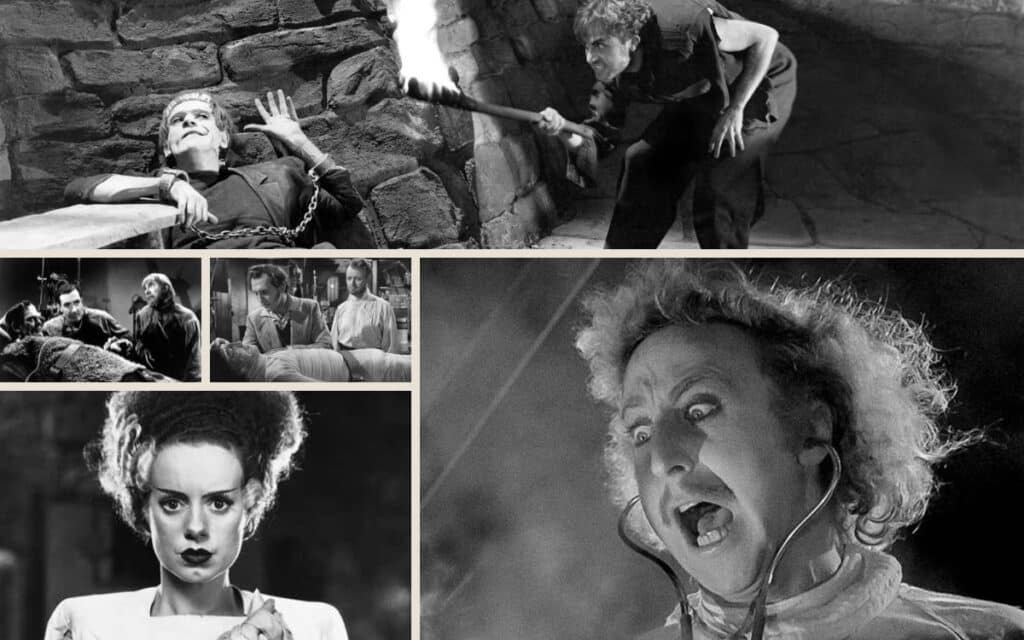
When Mary Wollstonecraft Shelley penned her immortal novel Frankenstein; or, the Modern Prometheus in 1818 it is unlikely she had any clue her story would eventually be considered a literary classic.
She certainly could have had no concept her tale would go on to provide the inspiration for an icon of a future medium of entertainment. That of the cinema.
Frankenstein’s creature has become a colossus of the horror movie genre and, along with Dracula, werewolf and mummy remains one of the most recognisable monsters in popular culture worldwide.
I grew up with a love of classic movie monsters and vintage horror. The celluloid Frankenstein and his tragic creation, stitched together from body parts acquired from corpses and shocked into unnatural, reanimated life, have always loomed large in my consciousness.
When my great friend and fellow enthusiast, Ian J Walls, and I decided to team up to co-write a comedy-horror novel, it was inevitable Frankenstein would feature in the book. Hence Igor and the Twisted Tales of Castlemaine, detailing the further adventures of Victor Frankenstein’s much abused and put-upon assistant, took shape in our metaphorical laboratory.
Our version of Victor Frankenstein is, to put it bluntly, a maniac. We drew from, and exaggerated, some of the more extreme character traits of the mad scientist trope to create a ghastly employer who would eventually cause the downtrodden Igor to rebel, quit his thankless life as a lickspittle and go on to experience his own adventures.
Below, I list 10 of my favourite films featuring various versions of Frankenstein, all of which I not only continue to enjoy watching but have even occasionally found inspirational, in chronological order:
My Favourite Frankenstein Films
Frankenstein (1931)
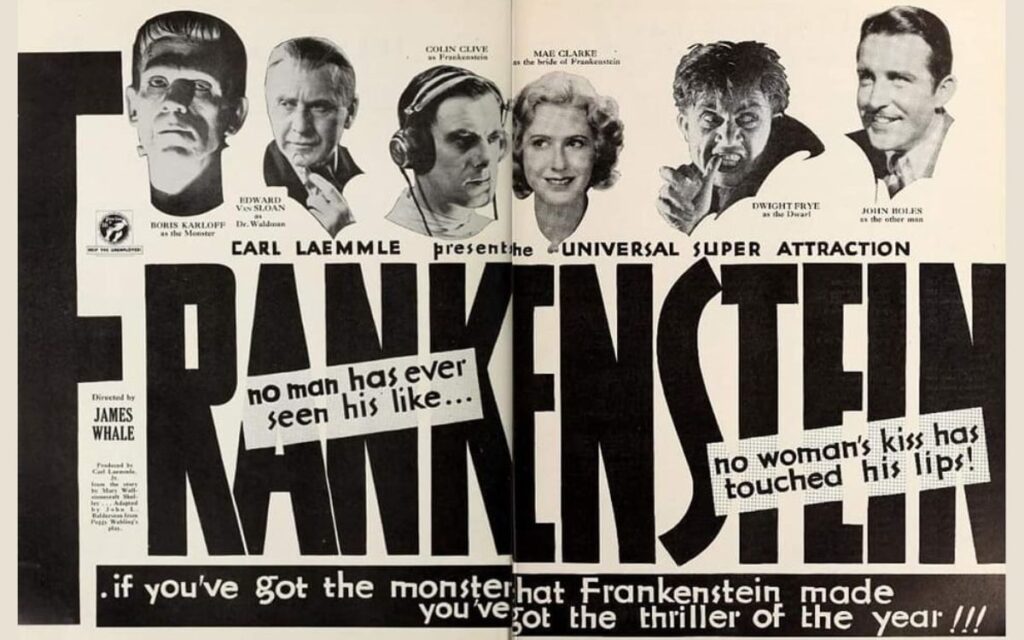
The first talking adaptation of Mary Shelley’s novel is a monumental landmark in horror cinema and proved a huge hit for Universal studios.
Boris Karloff presented the definitive version of Frankenstein’s creation, setting the template for many a monster to come and searing the popular image of the creature into the public consciousness.
His wonderfully emotive performance, shining through the masterful make-up of Jack Pierce, elicits true sympathy for the unfortunate monster as well as generating terror in the audience.
Colin Clive complements the piece as the driven Henry Frankenstein whose initial belief he has matched God in his ability to create life is dashed by the reality and consequences of his actions.
The Bride of Frankenstein (1935)
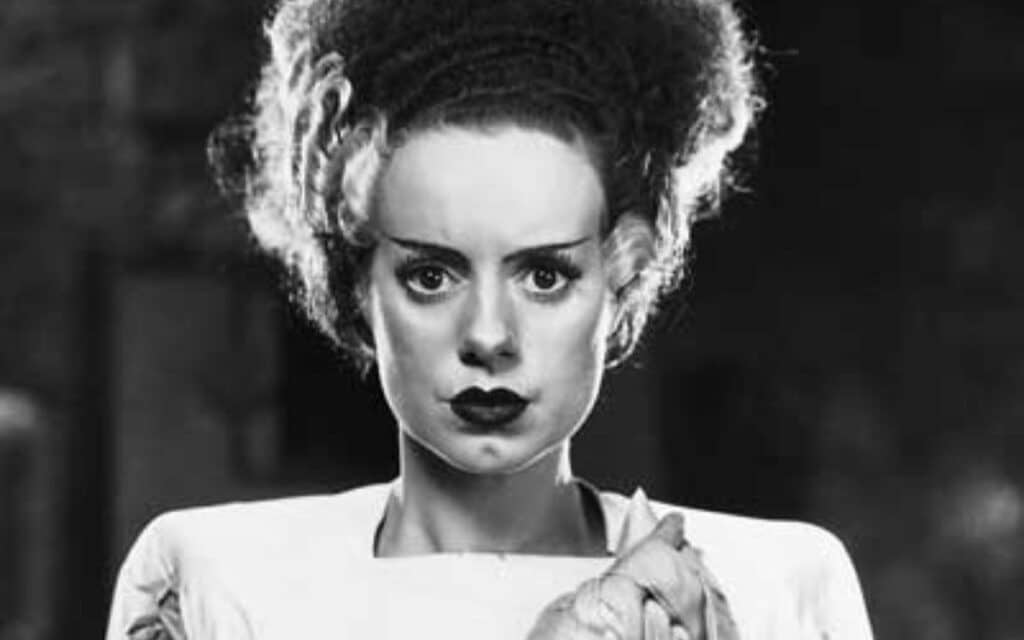
One of those rare gems of a sequel which exceeds its brilliant predecessor, The Bride of Frankenstein can, in many ways, be considered James Whale’s masterpiece.
Karloff returns, endowing his creature with an even greater demand for audience sympathy than in the first picture.
Whale directs superbly, creating a work rich in religious imagery and shot through with black humour. Elsa Lanchester’s eponymous bride, despite her relatively brief screen time, has endured as a pop culture icon.
Son of Frankenstein (1939)
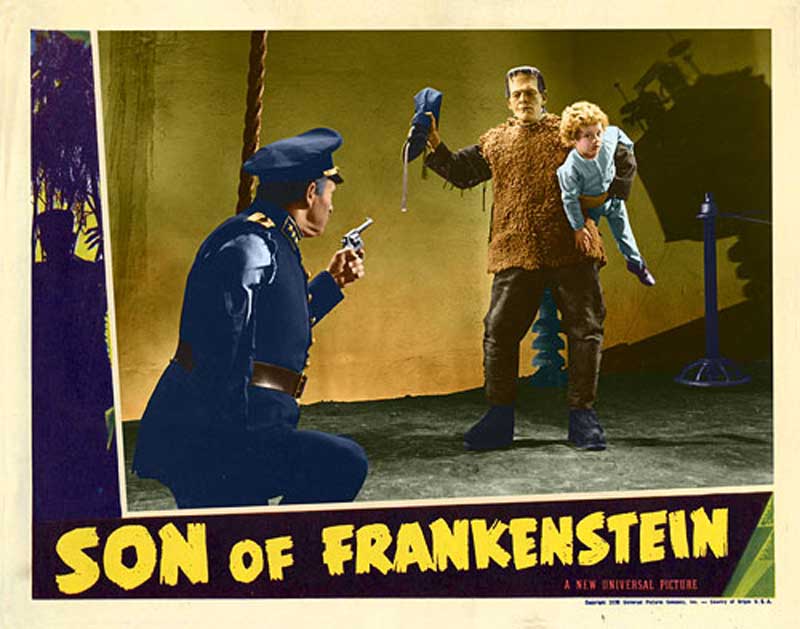
Featuring the final appearance of Karloff in his most famous role, Son of Frankenstein is a hugely enjoyable entry in the Universal cycle. Basil Rathbone plays Wolf Frankenstein, son of Clive’s original scientist, who is tempted to dabble in the family business.
Frankenstein falls under the influence of cunning, broken-necked shepherd Ygor, marvellously portrayed by the legendary Bela Lugosi, who has plans to employ the monster as a tool of vengeance against those responsible for his attempted execution.
Frankenstein Meets the Wolf Man (1943)
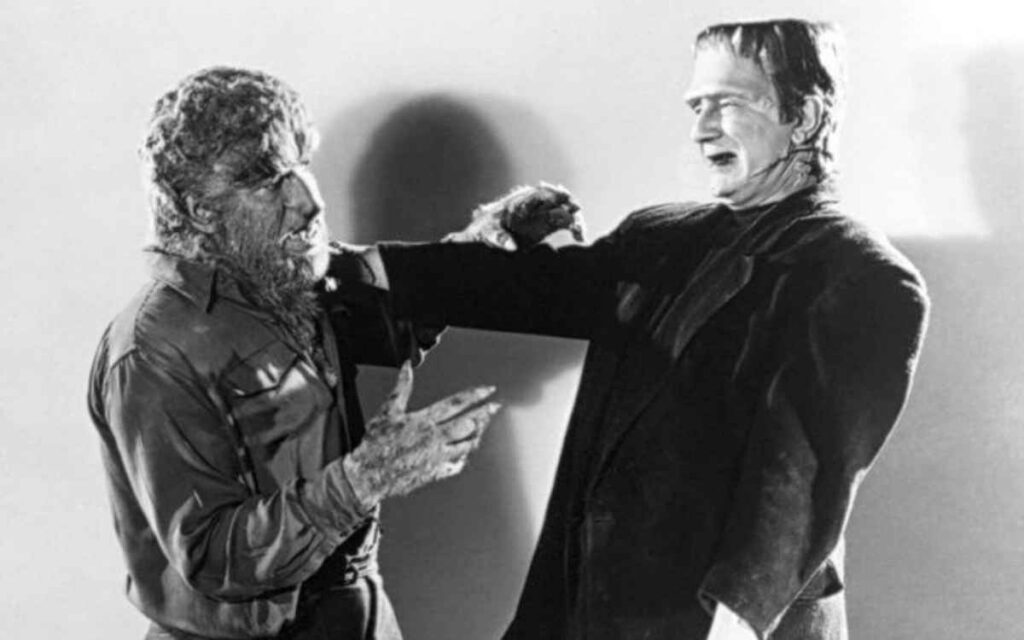
A direct sequel to The Wolf Man (1941), Frankenstein Meets The Wolf Man (1943) was the first of Universal’s attempts to mix and match their famous horror properties.
Lon Chaney Jr is once again excellent as the tortured Larry Talbot who, inadvertently revived from his resting place, seeks a resolution to his lycanthropic existence within the records of infamous scientist, Dr Frankenstein.
It is clear from the outset, the prime purpose of this movie is to set up the clash of the monsters but it’s a fun ride and, as a horror geek, I find it never less than a joy to watch the two titans battle it out on screen.
The film is also notable as featuring the only appearance of Lugosi as the monster, having famously rejected the role prior to casting of the 1931 production.
The Curse of Frankenstein (1957)
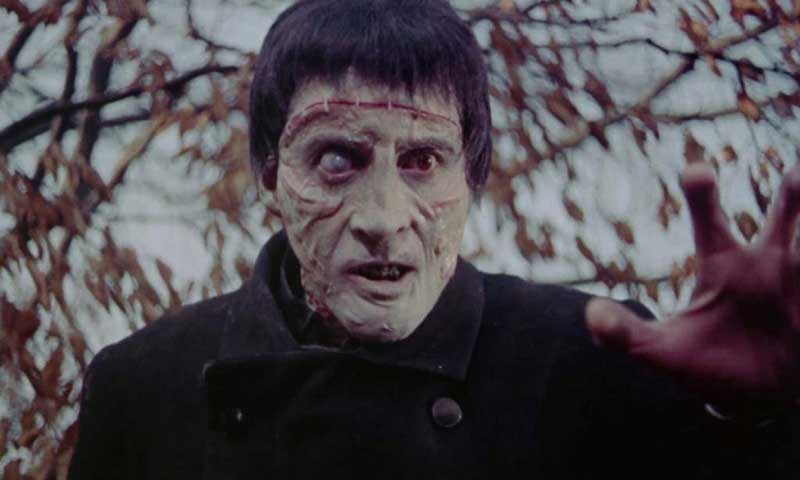
The first of Hammer Studios’ own Frankenstein series, this film kickstarted the wildly successful horror cycle for which the company became internationally renowned.
In The Curse of Frankenstein (1957), the emphasis is very much on the human monster, Baron Frankenstein himself, and this would be a constant feature of the Hammer productions.
Peter Cushing portrayed the Baron in all but one of the series (1970’s Horror of Frankenstein saw Ralph Bates briefly inherit the part), and it is he, rather than the various beings he inflicts upon the world, who remains the centrepiece of the films.
The Curse of Frankenstein sees Cushing put in a masterly performance; fanatical, ruthless, yet possessed of an icy charm which places his Baron high in the pantheon of movie villains.
Christopher Lee, who would go on to become arguably the greatest Dracula in screen history, looks suitably horrific under Phil Leakey’s makeup and, although not as sympathetic as Karloff’s portrayal, proves equally as menacing.
Brilliantly directed by Terence Fisher and shot in glorious colour, Curse is a Gothic delight and an undoubted genre classic.
Frankenstein Created Woman (1967)
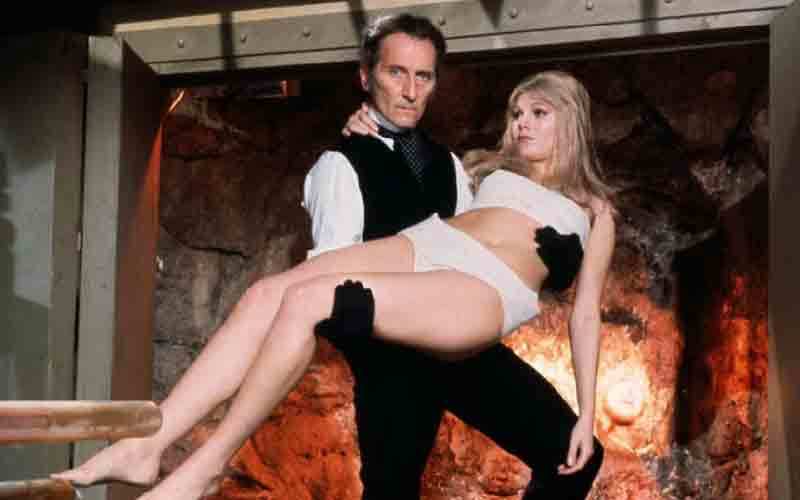
In this highly entertaining instalment of the Hammer series, Cushing’s Baron Frankenstein turns his attention to the human soul, adding a metaphysical twist to his usual experiments in Frankenstein Created Woman (1967).
Former Playboy playmate Susan Denberg plays Christina, the deformed and tormented innkeeper’s daughter, who commits suicide after witnessing the execution of her lover Hans (Robert Morris).
Frankenstein revives Christina, curing her physical deficiencies in the process, and transfers Hans’ soul into her body.
What follows is a terrific revenge story as Hans’ ghostly influence on Christina sees her dishing out bloody retribution to the upper-class ruffians responsible for her beloved’s demise.
Dracula Vs Frankenstein (1971)
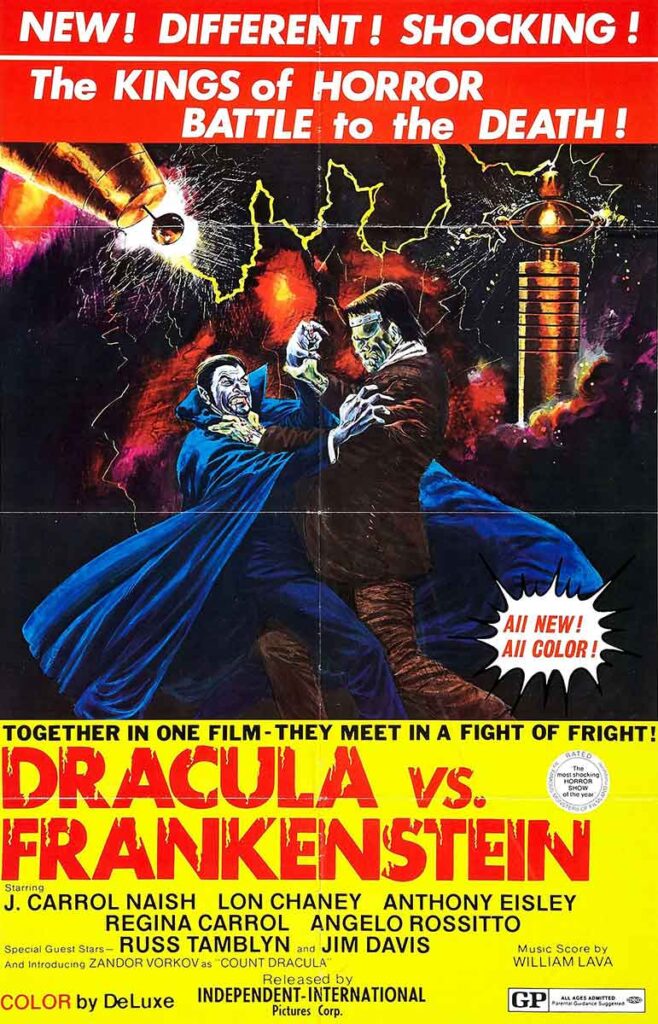
Although not one for the Gothic purist, Dracula Vs Frankenstein is nonetheless a rip-roaring example of zero-budget grindhouse cinema from cult exploitation director Al Adamson.
The movie features veteran actor J Carrol Naish as the last surviving Frankenstein, talked into assisting Dracula (Zandor Vorkov) in his quest for invincibility.
The finale of this drive-in classic does exactly as advertised as the Count and Frankenstein’s creation meet in deadly combat.
Confusingly, the monster is here played by two different performers: John Bloom and Shelly Weiss, billed as “The Monster” and “The Creature” respectively.
Frankenstein and the Monster From Hell (1974)
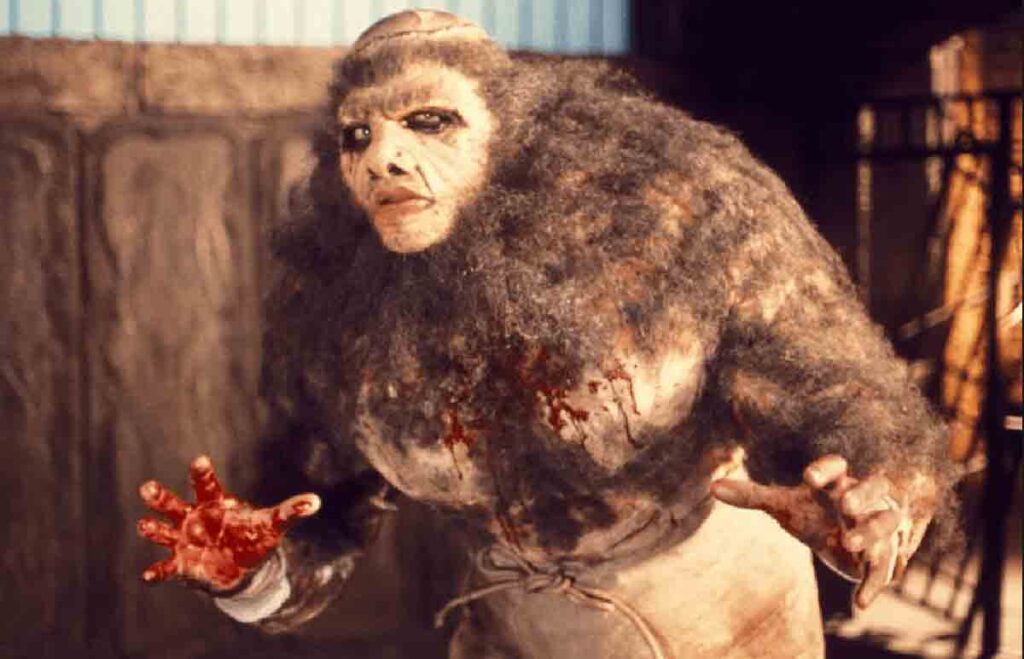
The final Hammer Frankenstein to date, Frankenstein and the Monster from Hell (1974), sees Dr Simon Helder (Shane Briant), a devotee of Frankenstein’s works, incarcerated in the same lunatic asylum to which the Baron himself was consigned some years earlier.
Helder quickly discovers Frankenstein, operating under the pseudonym Dr Victor, is in fact running the place and, of course, up to his old tricks.
It is not long until Helder is assisting Victor in providing a new body for the brain of inmate Professor Durendel (Charles Lloyd-Pack).
Future Darth Vader, Dave Prowse, plays the hulking, homicidal brute into which the unfortunate professor’s brain is transplanted.
Young Frankenstein (1974)
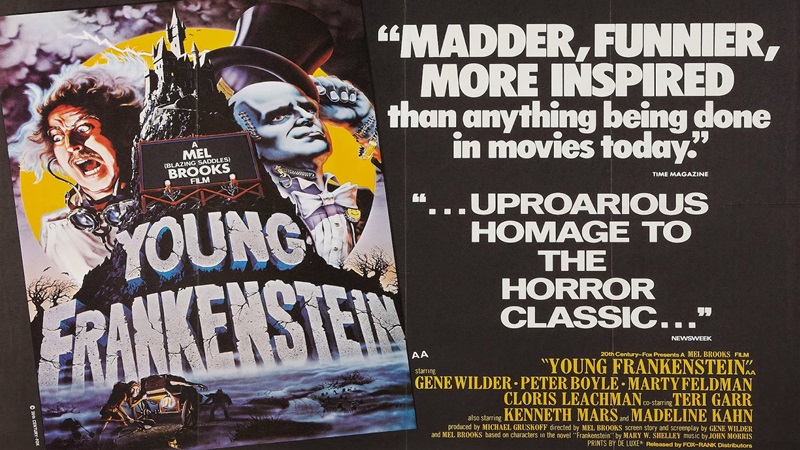
Mel Brooks’ hilarious comedy, Young Frankenstein (1974), is a wonderfully affectionate homage to the Universal horrors of the 1930s and 40s with Gene Wilder magnificent as the modern-day Dr Frederick Frankenstein.
Frederick initially denies his infamous lineage, even claiming his surname should be pronounced “Fronkensteen”, but eventually finds himself continuing his late great-grandfather’s work.
Special mention must go to Marty Feldman and his superlative portrayal of Igor (which he pronounces “Eye-gore”).
The Bride (1985)
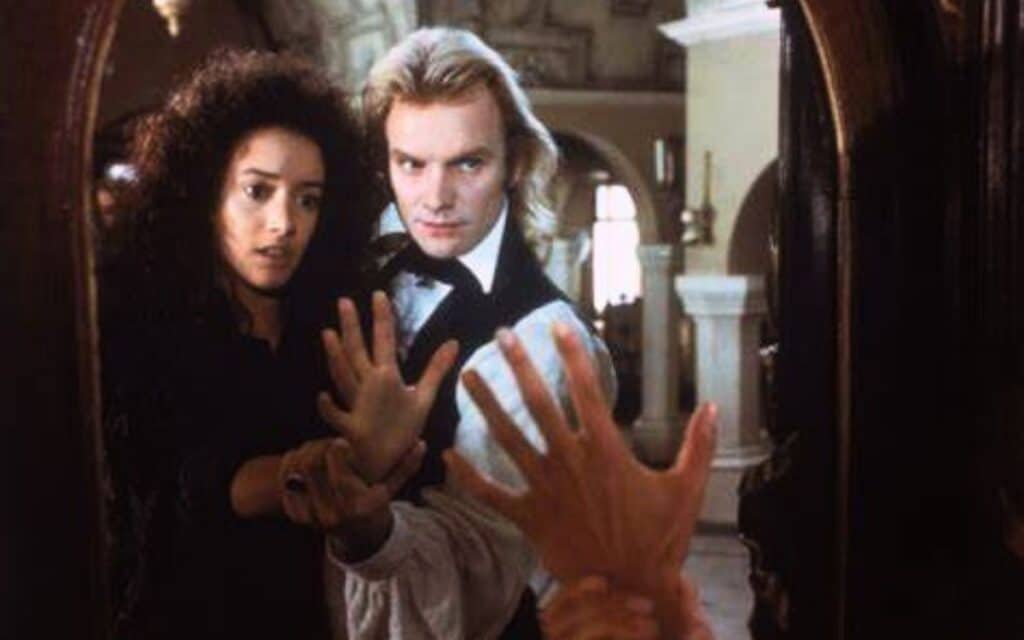
I suspect The Bride does not feature highly on many genre fans’ list of favourites, but I have always held a great deal of affection for this 1980s curio.
In this version of the tale, Baron Frankenstein (Sting) creates a female mate for his original experiment (Clancy Brown). The “Bride” (Jennifer Beals) is a vast improvement on the Baron’s previous handiwork, having the appearance of a beautiful young woman.
Predictably, she promptly rejects the monster. Frankenstein selfishly decides to keep the woman for his own dubious purposes whilst his erstwhile project wanders the countryside with new friend, Rinaldo (David Rappaport), a circus performing dwarf who names him Viktor.
The story follows Viktor and the Bride, dubbed Eva by the Baron, as they live their respective, eventful lives until their inevitable reunion.
Some of the cast members’ performances do occasionally stray onto the wooden side but, overall, this is an engaging re-telling of the myth and provides a rare happy ending for Frankenstein’s creations.
For Ian’s and my own comedic foray into the world of Frankenstein, and other classically inspired horrors, please check out our book Igor and the Twisted Tales of Castlemaine.
Did Richard miss one of your favourite Frankenstein films? Tell us in the comments section below!
Tell







